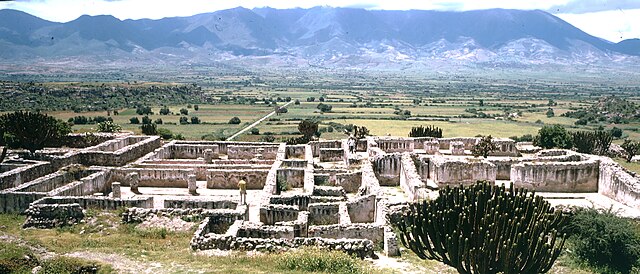Summary
A Glimpse into Yagul’s Past
Yagul, a mesmerizing archeological site, offers a unique window into the Zapotec civilization’s past. Located in the sun-drenched valleys of Oaxaca, Mexico, Yagul, which translates to “old tree” in the Zapotec language, was once a powerful city-state. The site thrived after the fall of Monte Albán, around 500-700 AD, and bears witness to the ingenuity and artistry of its builders. Visitors can explore the fortress-like structures, the impressive ball court, and the elaborate tombs carved into rocky cliffs. Known for intricate stone mosaics and elaborate frescoes, Yagul reveals the Zapotec’s advanced urban planning and their deep connection with spirituality and the afterlife.
Get your dose of History via Email
Architectural Marvels of Yagul
The architecture of Yagul is a testament to the Zapotec’s sophisticated society. It features a unique blend of defensive structures and ceremonial spaces, illustrating the dual nature of their urban design. The fortress, perched atop a steep hill, offers panoramic views that once served as a lookout for incoming threats. The site’s main plaza, several administrative buildings, and residential complexes provide insight into daily life, governance, and community hierarchy. Yagul’s ball court, the second-largest in Mesoamerica, indicates the cultural importance of the game to the Zapotec people, intertwining sport, ritual, and social order.
Yagul in the Modern Day
Today, Yagul stands as an enduring legacy of a vanished world, attracting tourists and historians alike. It became a UNESCO World Heritage Site in 2010, highlighting its global cultural significance. For those seeking to walk amidst the ruins, Yagul offers an evocative journey through time. It is not just a historic site but a symbol of cultural perseverance, teaching contemporary society about resilience, innovation, and resourcefulness of the ancient Zapotec people. Through careful preservation efforts, future generations will continue to learn from and admire the wonders of Yagul.
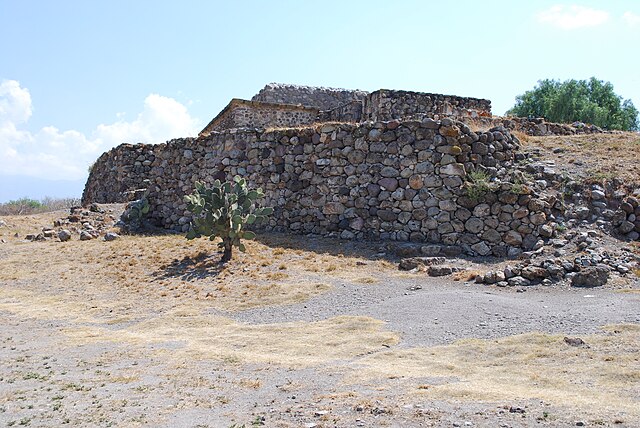
Historical Background of Yagul
The Rise of a Zapotec City
Yagul emerged as a beacon of Zapotec civilization after the decline of Monte Albán. Initially a minor center, it grew into a fortified city between 500 and 700 AD. It’s nestled in the Tlacolula valley of Oaxaca, Mexico. The site reflects the Zapotecs’ firm grip on power and trade in the region. Yagul maintained its status through clever alliances and strategic marriages. These practices wove a tight social fabric that withstood time and turmoil.
Cultural and Religious Significance
The cultural heartbeat of Yagul is palpable in its grand tombs and temples. These structures served as platforms for religious ceremonies and were the final resting places for the elite. Dwellers of Yagul held strong spiritual beliefs. They worshipped deities connected to agriculture, fertility, and the underworld. Their reverence is evident in the religious iconography decorating the site. As well, they practiced complex funeral rituals, highlighting their views on life and afterlife.
Yagul’s unique urban planning reflected its inhabitants’ lifestyle and social hierarchy. At the city’s core were civic-ceremonial centers, surrounded by terraced hillside homes. The differentiation in housing suggests a stratified society, with the elite living closer to the central plazas. Yagul’s planners also had a keen eye for defense. They utilized the natural landscape to shield the city against invaders, a testament to their architectural genius and understanding of the land.
Yagul’s Architectural Mastery
Yagul’s architecture is a marvel, blending aesthetic design with pragmatic urban planning. Significant structures include the Fortress, ball court, and a series of palaces and temples. Notably, the ball court at Yagul is one of Mesoamerica’s largest. It symbolizes the importance of the ballgame, both as a sport and a ritualistic event. Visitors today can still feel the echoes of the past amidst these ancient walls, bearing testimony to a once-thriving society.
Today, Yagul is a vital link to understanding Pre-Columbian America. It has earned its place as a UNESCO World Heritage Site. The site offers a raw and vivid history lesson for all who wander its paths. Preservation efforts continue to maintain its integrity, allowing future generations to appreciate its historical value. Indeed, Yagul serves as an enduring reminder of the flourishing culture that once dominated the Oaxacan valleys.
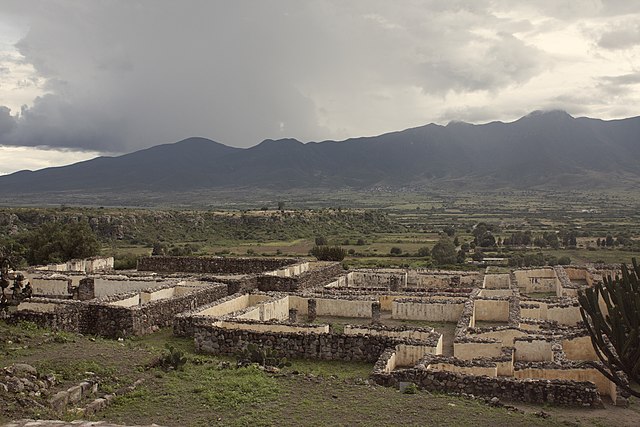
The Discovery of Yagul
Unearthing Yagul
Hidden for centuries, the ruins of Yagul came to light during archeological work in the early 20th century. This site, once a thriving center of Zapotec culture, sat awaiting rediscovery. It was Charles Lumholtz, a Norwegian explorer, who first documented the site. As a pioneering ethnographer, Lumholtz’s extensive travels led him to the heart of the Oaxacan valley. His work brought Yagul to the attention of scholars worldwide.
Further excavations took place during the 1930s. These were led by Mexican archaeologists who recognized Yagul’s significance. The investigators painstakingly brushed away centuries of dust. In doing so, they revealed a civilization’s former glory. The unveiled tombs, frescoes, and ball court all told stories of the past. These finds spurred continued interest and deeper dives into the region’s history.
A Wealth of Artifacts
The digs at Yagul uncovered abundant artifacts. These include pottery, tools, and remnants of textile work. Each artifact whispers tales of daily life, trade, and artistry. Researchers meticulously cataloged these items. They then conveyed the pieces to museums for public display and education. Thus, Yagul’s legacy was shared with the world.
Yagul’s Significance in Mesoamerican Studies
The discovery of Yagul has filled many gaps in Mesoamerican history. It helped scholars piece together the complex society and economy of the Zapotec civilization. Its architecture gave insights into the social and political life. Moreover, Yagul’s well-preserved state allowed experts to study its urban planning methods. Such findings have been crucial in understanding the pre-Hispanic era in Mexico.
Today, Yagul stands as a testament to the sophistication of the Zapotecs. It serves as an educational site for visitors globally. As a source of national pride, the Mexican government has taken great strides in preserving Yagul. It is both a historical monument and an active archeological site. Ongoing research here continues to uncover the mysteries of the Zapotec heritage.
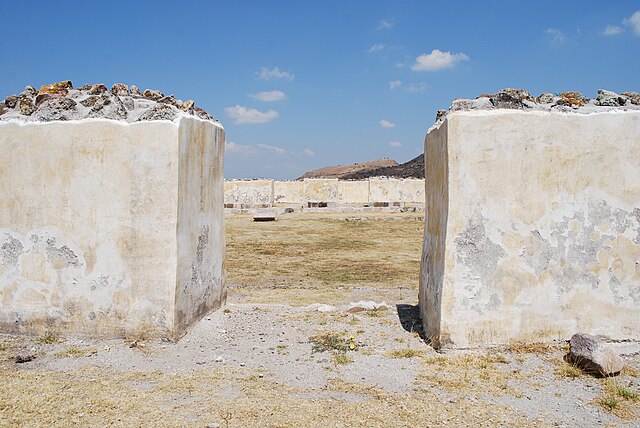
Cultural Significance, Dating methods, Theories and Interpretations
Understanding Yagul’s Place in History
Yagul’s cultural significance is vast, standing as a crucial part of the Zapotec civilization’s history. Its ruins offer insights into social, economic, and religious practices that thrived in Oaxaca’s valleys. The site’s urban design and artwork reflect a complex society deeply connected to their beliefs. Through Yagul, we see the imprints of rituals, governance, and everyday life that were integral to the Zapotecs.
The Science Behind Dating Yagul
Determining the age of Yagul has been a blend of traditional archeology and modern technology. Methods like stratigraphy and carbon dating have helped fix timelines for the site’s occupation and growth. Experts have used these techniques to understand construction phases. They have also timed cultural shifts mirrored in the architectural styles and artifacts. This scientific approach helps pinpoint the era of Yagul’s rise to prominence.
Several theories circulate about Yagul’s purpose and decline. Some suggest a climate change led to its abandonment, while others speculate on conflicts. However, what stands out are the interpretations of its art and buildings. Studies lean toward the idea that Yagul was a ceremonial center. It was likely significant in governing outlying areas. Though the full truth remains elusive, the educated guesses provide a narrative for the site.
Interpreting Yagul’s Frescoes and Tombs
The murals and tombs at Yagul are rich sources of speculation and study. They depict complex iconography linked to the Zapotec’s religious cosmology and afterlife beliefs. Interpreters view these as guides to understanding the rituals and hierarchy of the era. These artistic treasures serve as keys to unlocking the ideologies that shaped Yagul’s inhabitants’ worldview.
Amidst Yagul’s ruins, researchers and tourists alike can fathom its past glory and significance. As explored, art and architecture open windows to its underlying cultural context. Each hypothesis adds a layer to our understanding of this ancient city. The continuing interpretation of Yagul’s legacy ensures its past continues to inform our present.
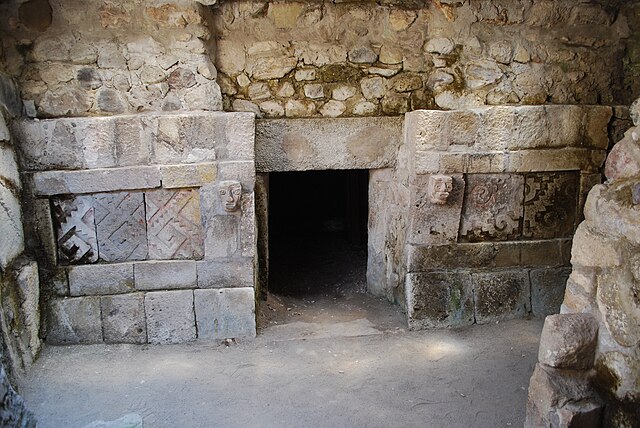
Conclusion and Sources
In conclusion, Yagul serves not only as a physical remnant of the Zapotec civilization but also as a crucial cultural artifact for historical and anthropological study. It provides deep insights into the social structures, religious beliefs, and everyday lives of its inhabitants. The dating methods, interpretations, and ongoing research highlight the site’s significance and foster a broader understanding of pre-Columbian Mesoamerican history. While many aspects of Yagul’s past remain shrouded in mystery, the pieces that have been uncovered through careful scientific inquiry allow us a glimpse into a world long gone. As we continue to uncover and decipher the richness of Yagul, it remains a beacon of cultural heritage and an indispensable resource for the Oaxacan legacy.
Flannery, K.V., and Marcus, J. (2012). The Creation of Inequality: How Our Prehistoric Ancestors Set the Stage for Monarchy, Slavery, and Empire. Harvard University Press.
Marcus, J., and Flannery, K.V. (1996). Zapotec Civilization: How Urban Society Evolved in Mexico’s Oaxaca Valley. Thames & Hudson.
Blanton, R.E., Kowalewski, S.A., Feinman, G.M., and Finsten, L. (1993). Ancient Mesoamerica: A Comparison of Change in Three Regions. 2nd Edition, Cambridge University Press.
Joyce, A.A. (2004). Mixtecs, Zapotecs, and Chatinos: Ancient Peoples of Southern Mexico. Blackwell Publishing.
Whitecotton, J.W. (1977). The Zapotecs: Princes, Priests and Peasants. University of Oklahoma Press.

